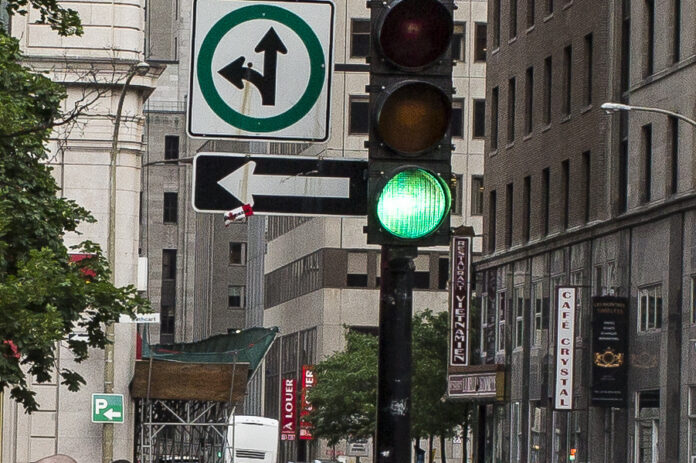I’m from the generation where we were taught that when there was an emergency vehicle coming up behind us, our role as a road user was to quickly pull over to the right and clear the way. to the maximum to leave full latitude to the emergency vehicle. The idea, of course, was to collaborate as best as possible to give paramedics, police or firefighters every chance to do their job and, if possible, save lives.
Nowadays, with the density of traffic that we find on our roads, even on occasion with the compact traffic jams that form there, it sometimes becomes considerably more difficult to do our duty as benevolent driver-citizens. Except that…
A new technology could come to our rescue and help everyone do well in critical situations. A technology is currently being tested by the European division of the manufacturer Ford and consists of a system of intelligent traffic lights able to communicate with vehicles, with some basic equipment.
This system will ensure that as soon as they detect the presence of approaching emergency vehicles, the traffic lights will automatically turn green, thus preventing fire trucks, police vehicles and ambulances from accidentally getting stuck behind a line of vehicles stopped in front of a red light.
Initially, the system is based on connected technology that allows real-time data exchange between cars, emergency vehicles and traffic lights. The mobile technology C-V2X (for Cellular Vehicle-to-Everything) is used here, a platform that has the power to connect vehicles to road infrastructure and other vehicles.
Preliminary tests have been carried out in Germany, specifically on a road in Aachen, where eight consecutive connected traffic lights have been installed, as well as on two sections of road located just outside the city, where three consecutive traffic lights have been placed.
To conduct the tests, a Ford Kuga plug-in hybrid SUV was equipped with the required communication equipment and then tested with two different scenarios. In the first test, we used this Kuga as an ambulance, while in the second scenario, we used it as an everyday vehicle.
In the other scenario, which was still done with the same Kuga, but used this time as a normal vehicle, the communication was done in reverse. Instead, the car received the timing information from the traffic lights as they changed color, either from red to green or from green to red. The car, also equipped with Ford’s adaptive cruise control system, was also able to modulate its speed and reduce it if necessary to ensure that it meets a green light once it reaches the intersection.
In short, this is a great way to adjust the speed of vehicles, to make traffic flow more smoothly, to reduce the risk of congestion and to avoid excessively sudden braking.
As a fervent defender of road safety, it goes without saying that this type of technology appeals to me.
By this process, certain dangerous situations will necessarily be eliminated. For example, it will prevent an emergency vehicle from being delayed when approaching crowded intersections, a situation that can prove fatal if responders rushing to the emergency room cannot reach it in a reasonable time. In these types of situations, you have to know that every minute counts. Besides, the statistics speak for themselves. Experts estimate that a traffic accident victim will have a 40% improved survival rate if they are taken care of four minutes earlier.
This system could also reduce the risk of accidents for emergency vehicles that have to cross red lights, which still happens quite often, improve traffic flow for all road users, restrict unnecessary waiting and therefore also reduce CO2 emissions.
If this new technology can make our roads more accessible for our first responders and allow us better traffic during rush hour, everyone will be a winner, and safer. More alive, too.















